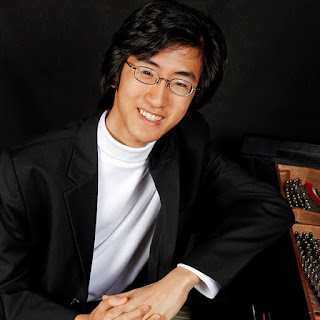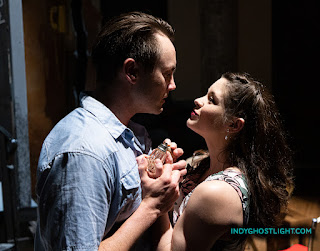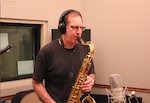Last APA Premiere Series concert of 2016 brings Texan Sam Hong to the Indiana History Center
 |
| Sam Hong is now a student of Leon Fleisher at the Peabody Institute. |
Some of that legacy — ranging from the slight to the substantial, from the compact to the expansive — formed the solo half of Sam Hong's Premiere Series concert Sunday afternoon at the Indiana History Center. The American Pianists Association is bringing to town five finalists, one of whom next April will win the fellowship in its 2017 awards.
The 22-year-old Korean-born Texan showed the near-capacity audience in the Center's Basile Theater that he had more than obvious ideas about what makes variations so compelling for the attentive listener.
One of the most formidable of such works — Brahms' Variations and Fugue on a Theme by Handel, op. 24 — brought the concert up to intermission. The second half featured Hong with the Indianapolis Chamber Orchestra in Beethoven's Piano Concerto No. 3 in C minor, op. 37.
Hong offered a beguiling account of the Brahms, forging emotional connections with its variety. He seems to have a keen sense of time and pacing. By the time he got to the fugue, he was set on resisting the need to crown what had gone before with anything too grandiloquent. There was a variety of momentum and dynamics that checked the fugue's juggernaut feeling quite successfully. He gave the illusion of having more in reserve even at the very end.
At the outset, Hong favored a dry presentation of the theme, but proved to be more of a colorist as the work proceeded. A tolling-bells variation benefited from more lavish use of pedal. His technical command was secure, with crisp articulation dominant. He was always sensitive to rhythmic figures that go so far in giving each variation its own character. The octaves were stunning, and rolled chords rang out.
I would have liked more scaling back expressively to a feeling of naivete in the "musette" variation and in a few of the others, however.
Incisiveness and well-proportioned rhythms were well applied to the opening work, Aaron Copland's Piano Variations. The most enduring of the young Copland's pieces, this 1930 elaboration on an angular theme bears many hints of the "Americanist" Copland to come: sonorities of sculptural vividness, with strong contrasts of register and an open harmonic palette that were later to reveal him as an unlikely but successful tone-painter of rural and Western America ("Appalachian Spring," "The Tender Land," "Billy the Kid," "The Red Pony," etc.). Hong offered a lithe, sharply etched interpretation that made the 10-minute piece take on the breadth of the Brahms in comparison.
In between came Beethoven's charming Seven Variations on God Save the King, an easy-to-take-in representative of the variations form. It benefits from having a familiar tune, and the contrasts among the variations were competently set forth in this performance. The slight pauses Hong put around the variation in minor mode were an effective touch.
After Matthew Kraemer led the ICO in an alert performance of Beethoven's "Coriolan" Overture, Hong returned to the stage for the C minor concerto. The collaboration was crowned with success in the Rondo finale. Superb rapport between soloist and orchestra gave the movement an extra playfulness that is not always evident, the theme being all business with a tincture of sternness.
The coordination was conspicuous earlier as well. Hong's unaccompanied statement at the start of the Largo movement was properly hushed, and set up a distinctive feeling of partnership with the orchestra, especially in such chamber-music episodes as the floating bassoon-and-flute dialogue against the piano's triplets and sextuplets.
The first movement was properly spirited and smooth-running, although the hectic quality Hong brought to the cadenza seemed excessive. But, with velvety trills, he made the way it subsided before the orchestra's re-entry convincing. It was among many signs in the concert that Hong is a well-equipped virtuoso with dependable insight about the expressive context of everything he plays.



Comments
Post a Comment